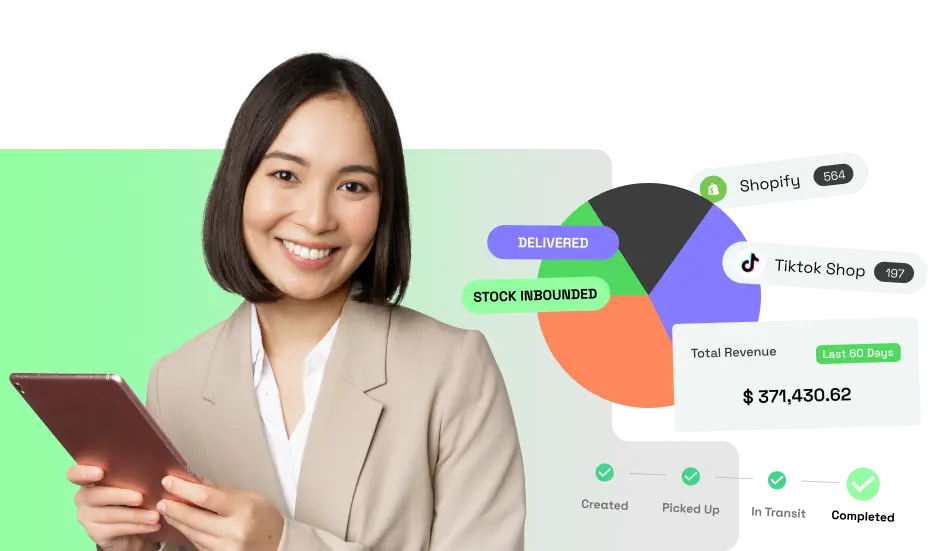One of the best things you can do, regardless of if you’re in a lockdown, or 100% working full time, is to make some extra money with a side gig. And why not? If it’s something you love and wants to share with others, a well-thought-out side gig with a solid plan can bring in a significant amount of revenue. There’s never been a better time to take the leap. But you need to understand some fundamental points about making your e-commerce business work.

Now’s The Time!
When looking at the E-Commerce landscape last year, Shopify reported that their Q2 activity saw more businesses signing up to use their E-Commerce platforms during the pandemic, increasing over 71% over the previous quarter. As well as the market leader in web hosting platforms, GoDaddy reported a 48% increase in their E-Commerce platforms during that same period. This demonstrates that merchants are adapting, shoppers are flocking to online retail, and E-Commerce entrepreneurs are striking while the iron is hot. This means the market is ready for your new ideas. With this fundamental shift in both buyer behaviour and the retail environment, the time has never been better to take your side projects and turn them into something bigger.
Side Gig Tip 1: Stop Dreaming And Get Started
At the onset, starting your own side business can seem intimidating, but you don’t need to have any specific training or any advanced education to do it; just the willingness to be bold, get out of your comfort zone and be willing to learn and adapt to the ebbs and flows of E-Commerce. It’s like running a marathon. You can read all the books you want, and watch youtube videos about running, but they won’t get you closer. The only way to run a marathon is to go and run one.
The same goes for your side gig. Start with a first step, then a second. Come up with a plan. If you want to start selling a DIY project, set yourself up on Etsy, make and post your item, and start telling everyone. If you’re a distributor or reseller of a manufactured product, build a storefront on Shopify or Lazada, and get going.
Take the first step, and don’t look back.

Side Gig Tip 2: Get Ready For The Long Haul
Success isn’t going to happen overnight and you need to be invested in what you’re doing. Your side hustle will take many hours away from your family, friends, and your downtime. It’s a herculean effort, given that a lot of your time will be taken up by your full-time job. Are you willing to make the sacrifices that it will take? Making your side gig dream a reality requires you to be consistent and keep focused. If you can do this and you fully commit to your E-Commerce business and all that it entails, then you’ll have a solid foundation to start from. There are also services and tools that can help you grow.
Running a side job also requires a strong understanding of money management. Figure out your profit margin, and stick to it. But make sure that you’re not pricing things too high, that it deters customers, or too low, that you’re not making enough. If you want to offer free shipping, add that into the margin calculation. If you invest into your business from your own personal finances, account for the fact that you need to pay yourself back. The biggest factor in a business not making it in E-Commerce is not accounting for every dollar that is spent, and how it ties back into your profitability.
Side Gig Tip 3: Build Your Online Presence
Once you know what it is you want to and you’ve committed to it, it’s time to start putting the word out there. Whether it’s via social media, organic search, an email list, or word of mouth initially, you need to find the people who would be interested in your product. The best way would be to optimize your web presence. If you’ve got your own website, then make sure that it’s as clean and easy to navigate as possible. Show your products, tell your potential customers about them, then show them how to check out.
Other things that can help would be to explore paid advertising and content marketing, but that could be once your business gets steady on its feet. Consequently, once you start making some sales, be sure to ask for real customer feedback. Without this, you’re exposing your side gig to a serious risk of failure, if you’re on the wrong track entirely.
Side Gig Tip 4: Work With a Purpose
When you start really working on your side business, it’s easy to get lost in the little things – is your site visually pleasant? Which font should you use? Are your pictures appealing? All good questions, but not what you should be spending your time on. You need to focus on things that will move the needle. You need customers to make this work, so you need to work hard to get them.
A good suggestion is to write down the top 2 things that will build your business the fastest, and 2 benchmarks you want to hit. Then, focus 90% of your time on them. The plan is not to aim as high as possible; then you’ll fail. Start with small, incremental goals. Bring on one satisfied customer, for example, then get another. There’s no shame in relying on the basic frameworks when making goals – you should be S.M.A.R.T. You’ve heard this acronym before, and it’s the perfect way to evaluate if you’re making the right targets to aim for. Are your goals Specific, Measurable, Achievable, Relevant, and Time-bound? This is a great way to stay on track.
Side Gig Tip 5: Plan For Growth
Just because we said you shouldn’t aim too high in the previous point, it doesn’t mean you shouldn’t have a plan to grow and scale your business when the time comes. It’s best to come up with some ideas and basic frameworks on how you’d expand, and set them up now so that when the time comes, you’re not hobbled by things you didn’t consider in your early days. Some things to consider:
- Manufacturing – As your demand rises, can your supply/supplier keep up? Have you thought about where you’ll get raw materials in the case of a disruption with your current supplier? Best to figure that out in your early days.
- Outsourcing – You’ll need to consider outsourcing later on to help you maintain efficiency as you scale up. You may need an accountant, a graphic designer, web designer, customer service, social media manager, etc…
- Inventory Management – Where will you keep your stock until it’s sent out? Do you know the basics of inventory management (inventory management tips blog), or will you need help with that to make it optimal?
- Single Channel vs. Multi-Channel Sales – Are you planning to use your own dot.com site exclusively, are you planning to move to a shop platform such as Shopify, Shoppee or Lazada?
- Order fulfillment and Distribution – If you’re a one-person show, you can probably manage the packaging and the shipping. But as your demand grows, you’ll need someone to take care of it for you.
It’s these last points that are the most crucial. It’s one thing to have your products on hand, and the demand for them, but if you can’t sell them efficiently, accurately manage your inventory, store the inventory, and get them to where they need to go, in a timely manner, your business won’t function for very long. If customers are dissatisfied with their shopping experience, the time it takes to package and ship, or even your returns policy, then you’ll lose that repeat customer.
This is something LOCAD can help with.
Side Gig Tip 6: Inventory And Fulfillment Are The Key
As your business grows, so should your distribution infrastructure. This means where you store your inventory, how you keep track of it, and how it gets to where it needs to go. Doing your due diligence there too is essential to making sure that the last mile of your shipment is seamless, and your service level is consistent. But you can only do this if your logistic partners are first-rate.
There are plenty of Third-Party Logistics (3PL) partners out there that offer this service. There are some key things about your fulfillment partner you should know, such as their service level, their flexibility, their ability to help you scale up, and their bottom-line costs:
Their Service Level
- How fast does your 3PL fulfill outbound customer orders, and how fast will new arriving stock be brought in and available for sale?
- Do they have a reasonable lead time? An average lead time for an outbound order should be 24hrs, and this should remain consistent
- Do you have a dedicated contact that you can reach in a timely manner?
- Keep in mind that the level of your service and timely fulfillment impacts your ratings. If you’re on a platform, then this level directly impacts your seller rating, which impacts your visibility and thus your sales. If you’re using your own site, then negative (or positive reviews will impact your search rankings.
Their Flexibility
- As you grow, you’ll learn that E-Commerce comes with a big seasonal fluctuation of order volumes. Flexibility from your provider is key. When sales surge, you don’t want fulfillment to be the bottleneck.
- And at the same time, forecasts are not always 100% accurate and you don’t want to be held to a particular volume if the sales aren’t there. Your fulfillment partner needs to provide flexibility both ways.
Their Ability to Scale Up
- The right fulfillment partner should be able to scale up as you grow your business. The best relationships with logistics partners grow over the years, so when selecting a partner now, try to find one that can still be by your side when the business grows
Integration and Automation
- A crucial aspect of fulfillment is seamless integration with your sales channels. Once set up, you can automate the flow of orders from your sales channels to the warehouse management system of the logistics partner. This is crucial.
- Avoid any fulfillment setups that require manual upload of orders, it will lead to inconsistencies and order cancellation.
- Also important is the real-time syncing of inventory from the warehouse to your sales channels. If the inventory is not synced, customers may place orders for products that are already out of stock, causing cancellations and frustrated customers. This is critical especially if you sell across multiple online channels.
Fair and Transparent Pricing
- Fulfillment costs are a major expense you’ll need to account for in your profit margin, so you want to get competitive rates. Look for someone who has the ability to stay flexible and won’t require a long-term contractual commitment. Even more important is a fair and transparent pricing scheme, without the fine print and hidden fees.
LOCAD is Here to Help You Grow
At LOCAD, we’ve seen many entrepreneurs grow from a small one-person shop to something greater. LOCAD is built to work with both e-commerce entrepreneurs and enterprise-level clients with dynamic and scalable technology solutions to put your product into the hands of your customers as easily and as quickly as possible. What we offer is a supply-chain-as-a-service, that can assist you with all facets of your end-to-end fulfillment. When you’re ready to grow your side gig into something bigger, and you want to outsource your logistics, we’re here to help.
Our solution is simple and can assist you with your fulfillment needs, as well as:
- Order & Inventory Management With Flexible Warehousing.
- Integration With your Sales Channels (website, marketplaces, shop platforms)
- Demand/Supply Planning.
- Back Office Workflow Automation.
- Order, Inventory & Sales Analytics.
Once we’re integrated with your E-Commerce shop, we store your inventory into our distribution warehouse and fulfillment locations that work for you. Regardless of what platform your customer uses, we rely on a consolidated inventory pool across all the warehouses, so that there’s never any concern over order fulfillment. When an order is placed, we automatically process it and ship it from the nearest fulfillment center. You can then track everything in real-time via our dashboard.
Called the LOCAD Control Tower, this dashboard gives you full visibility into our smart supply chain network. You can get real-time analytics to track your sales, your order fulfillment, and your inventory levels. The software is always calculating your inventory days on hand, and can tell you when to reorder, flag any non-moving stock, and display other important KPIs.
As a major shipper, LOCAD has contracted rates with many courier companies that can lead to significant cost savings vs the rates you pay in the branch or online directly with the courier. Savings on shipping costs can be a major factor to consider a fulfillment partner. With LOCAD’s localized fulfillment network, you can further cut down shipping costs when selling internationally if you opt for localized fulfillment. Opting for in-country fulfillment of your best-selling items can lead to a significant reduction in shipping cost and lead time.
All of these services come with flexible terms and variable fulfillment pricing, which is just what an E-Commerce store that’s just finding its feet needs. There are no lock-in commitments, and you can scale up and down if your products are subject to seasonality. Our aim is to offer you affordable, timely, and efficient solutions, so you can focus on growing your business.
Contact us to learn more about how we can offer backend fulfillment and support, while you turn your passion project into a reality.











